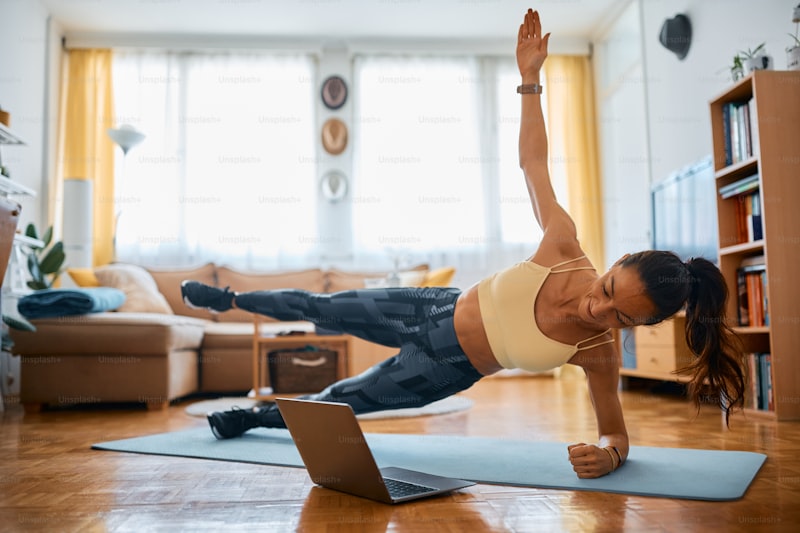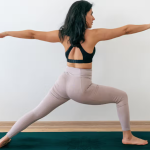The global pandemic has changed all our lives – there will be BC (Before Coronavirus) and AC (After Coronavirus) – and it may well be that the way we teach yoga will be altered for a while to come. Rather than being depressed or concerned, we can be prepared for this new way of working. And just as teaching online has given us a whole new skill set, as well as some surprising advantages, there may well be some pros to easing back to in-person teaching.
As our European counterparts start to come out of lockdown and pictures of Italian squares being filled with people emerge, we are currently awaiting announcements from the government as to how and when social distancing restrictions will be lifted. Normal life will resume, but not quite as we know it.
To help you prepare for getting back to in-person teaching, we’ve put together some best-practice guidelines, aka handy hints and tips, ahead of studios re-opening.
Safety First
When it comes to a pandemic, the motto is safety first. Our yoga students, employers, employees, and the people we hire our spaces from – we want to make sure that getting back to teaching is with the health and safety of our whole yoga community in mind.
This means that, just because the government says that we can get back to work, it doesn’t mean that we should. It’s worth thinking about the risks before you agree to go back to teaching in person.
- Does the place where you teach adhere to any new government-issued health and safety requirements?
- Will you be able to ensure that the yoga studio is kept properly clean?
- Will your students’ health be put at risk due to the space in which you teach?
- Will your own health be at risk?
If the answer to any of these is ‘yes’, then you might want to think carefully before committing to in-person classes again.
Plan your Return
Before planning in-person classes again, you should be clear on what the government guidelines are. We’d also recommend checking with your insurance providers, to make sure you’re covered for teaching in-person classes before you make any plans.
We’ve now spent six weeks adapting to lockdown life and, within a few weeks, we could be getting back to teaching in person. Instead of finding that you’re caught between the two, have a plan of action.
This plan could include checking with your students whether they’d be happy to return to classes yet. Also, check with the studios or venues that you teach to see what their plans for re-opening are. If you have your own yoga studio then make sure you’re completely aware of the health and safety guidelines published by the government or by the World Health Organisation.
A Phased Return
This could be the approach that many yoga businesses take. Instead of rushing from all-online to all-in-person, a gradual return to physical classes could be a safer and more considered way of doing it. By bringing back half your classes and keeping the rest as live-streaming or online classes, then you can reduce the number of students per class, which will help keep social distancing measures in place.
Practical Safety Measures
Social Distancing – In all likelihood, social distancing measures will be in place for a while to come – some scientists have been saying till 2022! So it will be worth thinking about keeping student numbers down to a level where 2 metres between students can be maintained. For smaller venues, this will be very challenging and could mean that it’s not financially viable to go back to teaching in-person yet. To help keep control of numbers, it could be worth taking advance bookings only and avoiding drop-ins for now.
Props – At the moment it would be a good idea to restrict the use of communal mats or props. As an Iyengar yoga teacher, I usually lug a huge bag of bricks and blocks to each class. Post Covid-19 I will no longer be doing this (internal cheer) as I will be asking all my students to bring their own. That way, the risk of cross-contamination is greatly reduced.
Class Plan – if your classes involve a lot of student movement, it may well be worth reducing this for the time being – keeping students to their mats to avoid students going near each other’s equipment or getting too close by mistake. Think about poses that need a lot of physical adjustments; you might want to avoid those for now or think of other ways to do them.
Payment – by keeping your bookings to advance bookings only you’ll reduce the need for cash payments, which aren’t a good idea at the moment. If you haven’t set up online payments yet then you could try using PayPal or stripe on your website. If this is too technical for you, you could get a website designer to add them for you for a small fee.
Records – it’s always been important to keep clear records and registers, but even more so now. Make sure your registers are kept up to date, so that if a case of COVID-19 is reported you can immediately notify anyone else who was in the same class. But don’t forget privacy laws – don’t name the person without their permission.
Cleanliness – this is doubly important now. Ask your students to regularly clean their yoga equipment. Ask them to wash their hands before coming into the class. Make sure you wash your hands (for the regulation ‘Happy Birthday’ x2 length of time) before and after each class.
Face Masks – the UK still seems to be in two minds about whether face masks are a good idea or not, but other European countries are making them compulsory in public spaces. If government guidelines recommend them, you’ll need to decide whether you want to teach a class wearing a mask. It might be that you ask students to wear masks to the class and outside while waiting, and then take them off once inside. You will need to be clear on what the guidelines are for this. (Our marketing team here is thinking of creating colourful designs for our teachers… Face masks, the new fashion accessory?! Let us know on instagram if you’d wear one of ours!).
If YOU Get Ill – have a back-up plan in case you’re taken ill. You can’t take any chances, even if you think it’s just a cold – and remember, it’s also YOUR health that you’re protecting. If you’re self-employed, your health is your business and you can’t teach if you’re ill.
Reviewing your Classes
Once you’ve made the decision to teach in-person classes again, it will be worth reviewing how things are going a few weeks in. If student numbers are very low, and the restrictions are affecting your ability to teach yoga properly, it might be better to go back to online teaching. As we said earlier, just because you can go back to teaching in-person doesn’t mean you have to.
On the other hand, it might be a lifeline for those students who haven’t been able to use online technology to keep their yoga going. For those people that live on their own, the social aspect of yoga classes is what keeps them coming week after week, and if you’re able to provide even small classes then it might be worth the financial hit.













